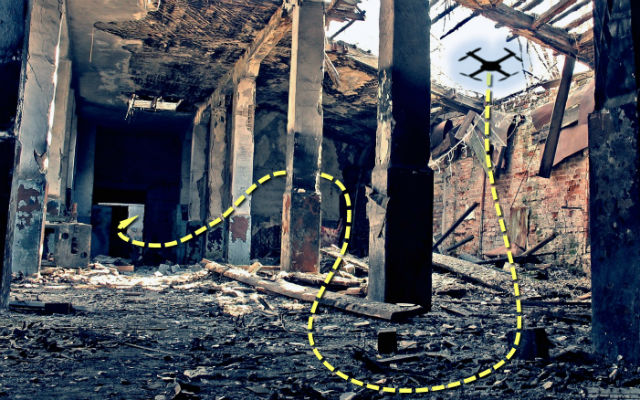The US Defense Advanced Research Projects Agency is looking to develop algorithms that would allow small, fast unmanned air vehicles to operate in cluttered environments without the aid of GPS or external communications.
A broad agency announcement issued on 22 December says in situations such as natural disasters – when UAVs are relied on to provide surveillance in buildings because it is too dangerous for humans to enter – a UAV needs to be able to navigate a “labyrinth of rooms, stairways and corridors”.
DARPA is not looking to develop a new UAV through the Fast Lightweight Autonomy (FLA) programme, the agency says – just the applicable algorithms.
The agency is looking for algorithms and software that would allow a UAV to fly through an open window at 20m/s (45mph) into “complex indoor spaces” without having to be controlled by external operators or through using GPS waypoints.
This, DARPA says, would enhance future unmanned capabilities, reducing processing power, communications and human intervention for low level UAV tasks.

DARPA
“Urban and disaster relief operations would be obvious key beneficiaries, but applications for this technology could extend to a wide variety of missions using small and large unmanned systems linked together with manned platforms as a system of systems,” Stefanie Tompkins, director of DARPA’s Defense Sciences Office, says.
“By enabling unmanned systems to learn ‘muscle memory’ and perception for basic tasks like avoiding obstacles, it would relieve overload and stress on human operators so they can focus on supervising the systems and executing the larger mission.”
Mark Micire, DARPA programme manager, says birds such as goshawks can fly at high speeds through dense forests without colliding with a tree, and many insects can dart and hover with “incredible” speed and precision. “The goal of the FLA programme is to explore non-traditional perception and autonomy methods that would give small UAVs the capacity to perform in a similar way, including an ability to easily navigate tight spaces at high speed and quickly recognise if it had already been in a room before,” he adds.
DARPA anticipates multiple awards not to exceed $5.5 million apiece, the announcement states, and the proposal deadline is 5 February. DARPA will provide successful bidders with the same small government-furnished UAV testbed to develop the algorithms.
Source: FlightGlobal.com



















